Fanø,Denmark 作者: 来源: 发布时间:2021-06-18
一、人口,面积,所属地区
Population: 3,488
Area: 55.8 km²
Municipality in Syddanmark
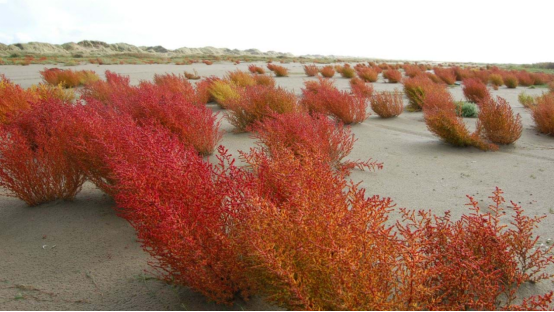
二、自然地理
Fanø is a Danish island in the North Sea off the coast of southwestern Denmark, and is the very northernmost of the Danish Wadden Sea Islands. Fanø municipality is the municipality that covers the island and its seat is the town of Nordby. Other towns include Sønderho, Fanø Vesterhavsbad and Rindby.
Fanø is separated from the mainland by the Wadden Sea over a span of approximately five kilometres (3.1 miles). The island is 16 kilometres (9.9 miles) long and 5 kilometres (3.1 miles) wide, and it is located off the coast from the city of Esbjerg to which it is connected by ferry. The ferry ride takes 12 minutes.
A variety of environments are to be found on Fanø. Not surprisingly, a very common one is sand. The island's whole western shore is one long beach. The island's northwestern corner is a vast sandbank called "Søren Jessens Sand". Søren Jessen was an entrepreneur and captain from Hjerting, today the westernmost suburb of Esbjerg and the bank is named after him because his ship, the "Anne Catriane", stranded here in 1712.
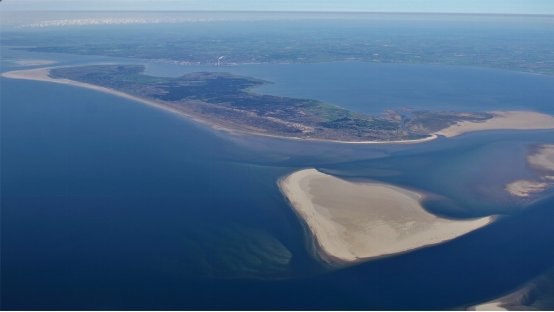
The vegetation on Fanø is mainly heath and small pine trees, never growing tall because of the predominant strong westerly winds from the North Sea.
The main attraction is the fine white sand beach, which is also a popular playground for all kinds of wind and water sports, such as kite flying, surfing and buggies. Fanø also hosts Denmark's first golf course, Fanø Golf Links, established in 1901.
Long before paved roads, the beach - being long, straight and quite firm - hosted a yearly motorcycle and car racing event from 1919 and until 1923, where a tragic accident killed a local boy and put a stop to further events. Today is possible to drive your own car on the beach all the way from Sønderho to Fanø Vesterhavsbad. A public bus service is also operated on the beach.
Also unique is the Wadden Sea with seals and migrating birds, as well as the two sailor towns Nordby and Sønderho with their maritime history, once among the most wealthy and influential in Denmark, and their vernacular architecture consisting of thatched-roof houses all oriented west-east, again because of the westerly winds.
During World War II, Fanø was part of the Atlantic Wall and the remains of the 300 bunkers built by the Nazis can still be spotted along the coast line.
A number of animals that are otherwise common in Denmark, such as vipers, squirrels, moles, rats and badgers, are nonexistent on the island, whereas foxes, hedgehogs, roebucks, hares and especially rabbits exist in abundance.
Transport
Bus and Telebus
Telebus as a supplement to the scheduled bus
The principle is that the scheduled bus will run less on regular scheduled services, and that during the outer periods, most of the buses will usually be on order. In the winter season, with a few exceptions, the scheduled car will only serve Nordby and Sønderho during the daytime on weekdays, giving priority to school children and ferry passengers. Rindby Strand and Fanø Bad are served by the bus. The bus must, after driving the morning departures from Sønderho, only visit and booked trips.
The bus is equipped with a lift, so that the scheme can also be used by wheelchair users.
For visiting citizens, there will be no changes in ordering and driving, it will still be door-to-door, and will have first priority over telecommunications.
Fano line
Travel by foot, bike or car with the Fan Line
The Fan Line runs between Esbjerg in Jutland and Nordby on Fanø. The crossing takes approx. 12 minutes.
Get to Esbjerg by car, train or bus and continue on the Fanø line to Nordby on Fanø. At Fanø you can easily and safely move around, whether you choose to have your car (and caravan) or bike with you, or whether you travel on foot. At Fanø there are fine cycling and hiking trails.
三、经济发展和规模
Taxes
Local government tax: 24.9%
Church tax: 1.14%
Health contribution: 3%
Primary taxpayer: 34
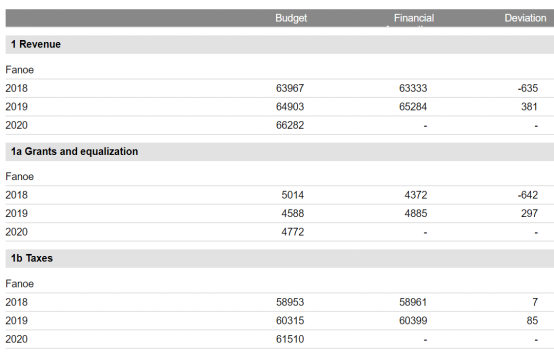
*All amounts are in DKK per. per capita in current prices.
四、产业特点/重点项目
Tourism is Fanø's most important business, and Fanø Municipality works closely with the island's tourism players as well as other partners locally, regionally, nationally and internationally to develop the tourism industry on the island. Fanø relies heavily on tourism and is visited by some 30,000 people each summer.
In connection with Fanø's participation in the national project "Experience-based Coastal Tourism", which was launched in 2012-2014, a potential plan for Fanø's tourism development was drawn up. The plan is based on Fanø's status as part of the Wadden Sea National Park and the Wadden Sea's appointment as a UNESCO World Heritage Site. In the period 2015-2017, the Municipality of Fanø, in collaboration with relevant parties, will work with the focus areas in the plan.
The Southwest Jutland Tasting Network
Fanø Municipality has been instrumental in the establishment of the food network “Southwest Jutland Flavors”. Southwest Jutland Flavors is a community of interest that works to promote awareness of Southwest Jutland's quality food and culinary experiences as well as increase the common identity and quality of life, and to mark South Jutland nationally and internationally. It is completely free to become part of the community Southwest Flavors.
The community has so far created the food inspiration book "Nature for the Table - a culinary journey along the Wadden Sea and the North Sea", an oyster recipe booklet and a lamb recipe booklet, as well as the annual recurring events of the Wadden Sea Lamb Festival, Krondyrsfestival and Oyster Trophy Week.
五、风景名胜,景点
Sønderho Kirke
Address: Sønderho Strandvej 1, 6720 Fanø
Soenderho Church was built in 1782 and the construction is quite unique. According to local tradition, it was built as a narrow nave with a built-in transept. As the population grew, extensions were added. At the end of the 18thcentury, the population number was at its highest in the parish and since tradition dictated the church to be able to seat every adult in the parish at the services, the ground plan of the church was altered to accommodate the extensions. That way, the ground plan became almost square.
The old furniture of the church was adjusted to fit in: a baptismal font from the 13thcentury, the altar dated 1717, a gallery for "poor people and other strangers", the pulpit dated 1661 that supposedly comes from the hospital chapel in Ribe, and the confessional. At that time, the most essential part of the service was not the communion but the sermon and so the pulpit was placed midway on the south side. The church had become an assembly-hall church.
Brass holders for tallow candles that had been donated by seamen over the years made up the lighting. Like the rest of the village, the church was wired for electricity in 1932. This furniture is still to be found in the big church which seats about 450 people today, the number of those attending Christmas Eve services, even though the population of the village, as of the most recent census, is only a about 340.
In the beginning of the 20thcentury the church took over the used pews from Ribe Cathedral. It might be fair to call it a neo-gothic style.
From the low, wooden ceiling hang a total of 15 votive ships. The only warship is a frigate that came by sea 200 years ago (it was found by the water's edge.) Except for a lifeboat and a lightship, only a few of the remaining merchant ships are actual models. Most of them were carved from memory by seamen and donated to the church, clearly emphasizing the connection between the sailors and their church. The church interior is whitewashed and the low ceiling painted grey. The furniture is kept in traditional, rustic colours. All in all, the church room appears friendly, warm, and obliging. The original, clear windows were replaced with leaded, coloured windows sometime in the 1940s.
In December 2006 a new organ, built by Danish organ builders Christiansen and Sons was inaugurated. It replaced the old pneumatic organ from 1903, and with its 16 (optional 18) registers it far more fits the acoustics and architectonic characteristics of the church.
In the north western corner of the church, gravestones that date back to around 1700 have been set up. They have all come from the churchyard, but were placed inside the church around 1965 to prevent further crumbling. They are made of sandstone and tell something about the history of the parish. There are still very old sepulchral monuments to be found in the churchyard.
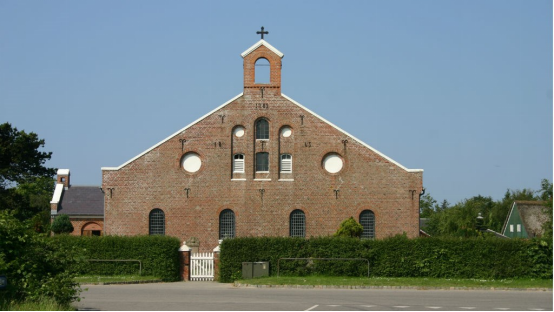
Fanø Kunstmuseum
Address: Nord Land 5, 6720 Fanø
Throughout the past 100 years and up till today Fanø has attracted a constant stream of artists, who more or less settled down on the island.
The collection of the art gallery is based on paintings by danish, german and swedish artists. With a combination of permanent and temporary exhibitions it is the aim of the gallery to show art portraying the frisian coast, past and present.
The Museum is located in Sønderho.
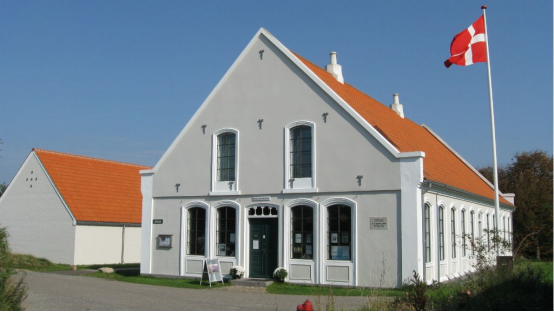
六、历史文化
Fanø is an island with an exciting history. Maritime navigation with the sailing ships in the 1700s and 1800s, Denmark's first health resort with bathing hotels, and the bunks of World War II.
sailing Ship time
The small sandy island by the far sea was once a "great power" in shipping. Even though the population at that time was not greater than it is today .
There have always been sailors on Fanø. They set sail from a foreign port. But in the 1760s the building of ships started on Fanø. It was a cumbersome affair. At Fanø there was no forest, so all the timber had to be imported from outside.
The shipbuilding sites - in both Nordby and Sønderho - lay out to the large and flat beach area close to the deep water. It is not hard to imagine the life and activity that was.
The highlight of shipbuilding on Fanø was around the 1850s. At that time, there were nine shipbuilders on the island. Together they had about 100 men employed. Plus all subcontractors.
In the years 1768 to 1896, a total of approx. 1100 ships on Fanø. Initially many small ships - including everter, specially built for sailing in the Wadden Sea - but gradually the ships got bigger and bigger. From the mid-1860s the fleet grew so rapidly that the island's own shipbuilders could no longer keep up. Already at that time there were problems with sanding in Sønderho harbor.
In the 1880s, the Fanø shipping companies switched to using iron and steel ships and the shipbuilding on Fanø came to an end. In 1896 the last ship was launched on Fanø. And quite slowly, the shipping companies also came to an end. The last Fanø ship was sold in 1919.
The sailing on the large gardens brought prosperity to the island. It reminds of the many beautiful captain's villas.
Fanø municipality was not merged with other municipalities by January 1, 2007, despite the nationwide Kommunalreformen ("The Municipal Reform" of 2007).
Fanous Coat of Arms
The shield appears in the colors blue and silver and illustrates the sea and the high sky.
The seahorse emphasizes the location of the sea and the number of them refers to the two old parishes that now form the community - Fanø Municipality.
The animals provide associations in the direction of the sea, which determine the life of the islanders and are the connection to all the oceans.
Fanø Municipal Weapon is designed by Th. Neis.
Hereafter approved by the Fanø City Council on March 8, 1993 and on August 6, 1993 revealed by His Royal Highness Prince Henrik.
七、其他信息
Sønderho - Denmark's most beautiful village
A visit to Sønderho is a must when visiting Fanø. It is not without reason that Sønderho won the prize as Denmark's most beautiful village. When you walk in the narrow streets with the fine old houses, you feel left to another time.
Park the car in the parking lot at the church and spend a few hours on a city walk in the small, crooked streets. Visit the Fanø Art Museum, Hannes House, Kåveren, Sønderho Mill and Sønderho Church. The many old, well-preserved buildings date mainly from the mid-1700s and 100 years on, when Sønderho was the dominant maritime city on the west coast of Jutland.
The harbor and yard area lay in a small protected bay at the northeast end of Sønderho. But the entrance gradually became true and is today a meadow.
From the summer of 2020, Sønderho Harbor will again be navigable, after the last few have been used to restore the natural harbor.
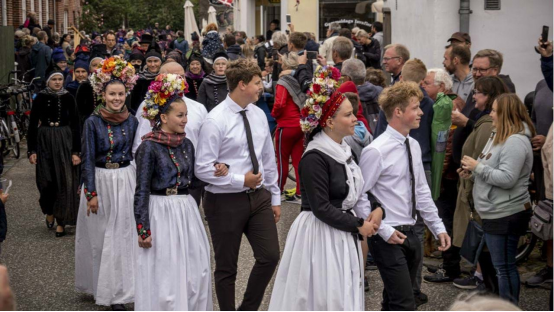
八、联系方式
Mayor: Erik Nørreby
Address: School Road 5-7, 6720 Fanø
Telephone: 76 66 06 60
mail: raadhuset@fanoe.dk
Facebook:https://www.facebook.com/Fan%C3%B8-Kommune-Nationalparken-198896377140332/
Website: https://www.fanoe.dk/
